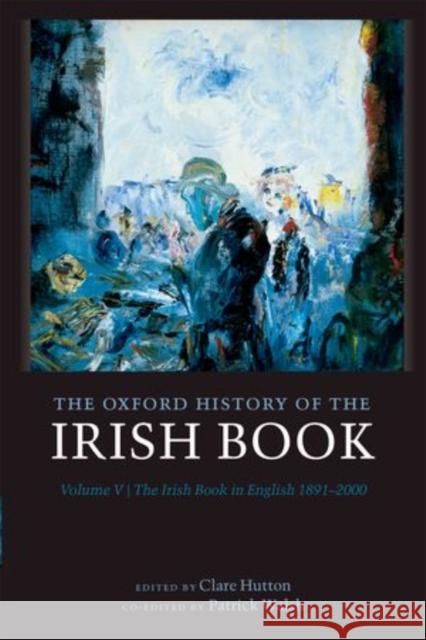The Oxford History of the Irish Book, Volume V: The Irish Book in English, 1891-2000 » książka
The Oxford History of the Irish Book, Volume V: The Irish Book in English, 1891-2000
ISBN-13: 9780199249114 / Angielski / Twarda / 2011 / 560 str.
The Oxford History of the Irish Book is a major new series that charts one of the most venerable book cultures in Europe, from the earliest manuscript compilations to the flourishing book industries of the late twentieth century. For the first time, it offers a history of the Irish book as a created object situated in a world of communications, trade, transport, power, and money, and examines the ways in which books have both reflected and influenced social, political, and intellectual formations in Ireland. It is an important project for the understanding of Ireland's written and printed heritage, and is by its nature of profound cross-cultural significance, embracing as it does all the written and printed traditions and heritages of Ireland and placing them in the global context of a worldwide interest in book histories.
Books have played a role of key importance in shaping Ireland's twentieth century cultural and political heritage. Volume V: The Irish Book in English 1891-2000 charts that heritage from the beginnings of the Literary Revival in the 1890s to the end of the twentieth century.
Part One consists of general survey chapters which examine developments in the cultures of Irish reading and publishing during the twentieth century. These chapters cover four specific periods, divided as follows: 1891-1921 covering the Literary Revival, and the often turbulent developments which led to the partition of the island; 1922-1939 looking at the social, economic and political machinations of print culture amidst an atmosphere of intense cultural conservatism, and during the so called economic 'war'; 1939-1969 examining the difficulties which Irish publishers continued to face, as well as the popular trends of reading 'Westerns'; 1969-2000 looking at the renewal of the Irish publishing industry, and the growth of cultural self-confidence which came about as literary censorship receded into the past.
Part Two examines some of the thematic issues raised in these survey chapters, including the financial and market factors governing the Irish book trade; the concerns of Irish regional publishing; the creation and reception of Irish books in the US and Australia; censorship; the Irish book in the informatics age; and publishing for Catholic Ireland.
Part Three is concerned with assessing the specific achievements of some of Ireland's most culturally significant publishing houses, and includes chapters on Gill and Macmillan; the Cuala Press; Maunsel and Company; the Dolmen Press; the Gallery Press and Blackstaff Press. This section also includes chapters on two British firms which have done much to support Irish writers: Macmillan and Faber.
The book concludes with a bibliographical chapter outlining 'Sources for Irish Book History, 1891-2000'. This is the first attempt to comprehensively outline the history of twentieth century Irish book culture, and will be the standard guide for many years to come.











